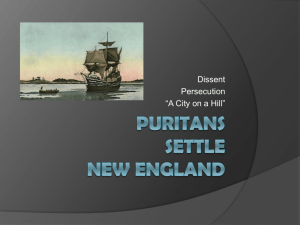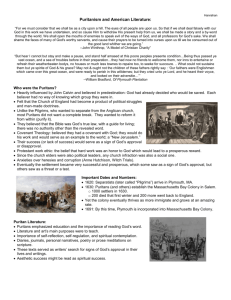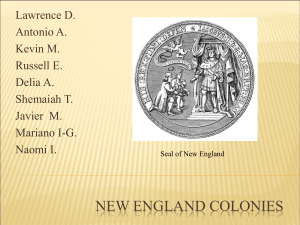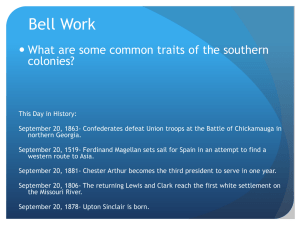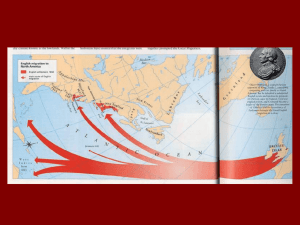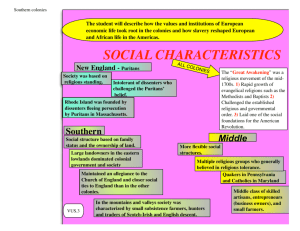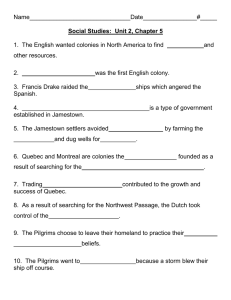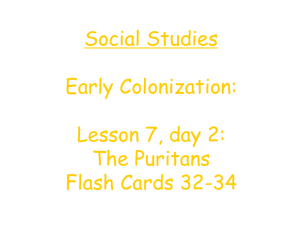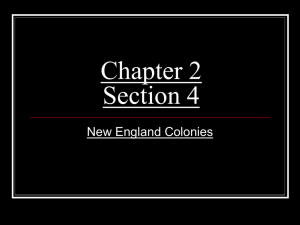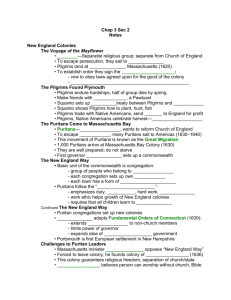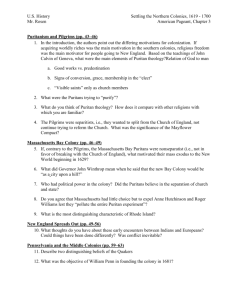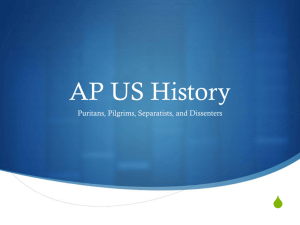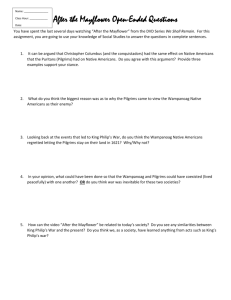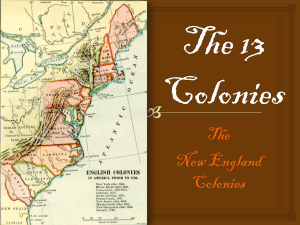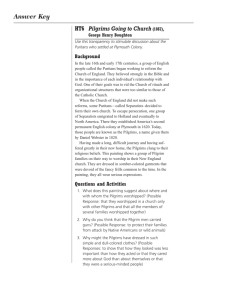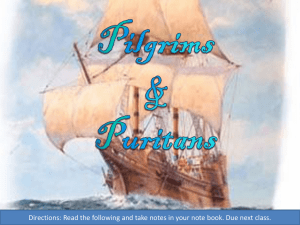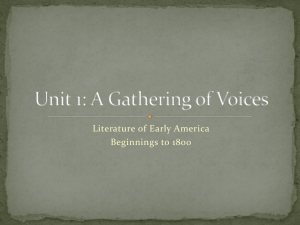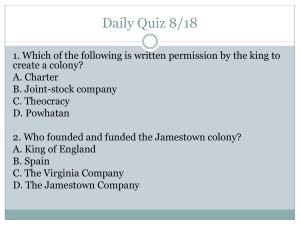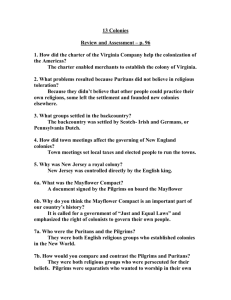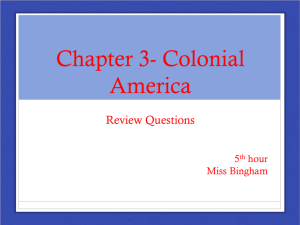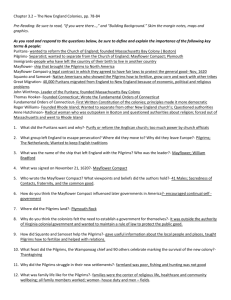The New England Colonies
advertisement
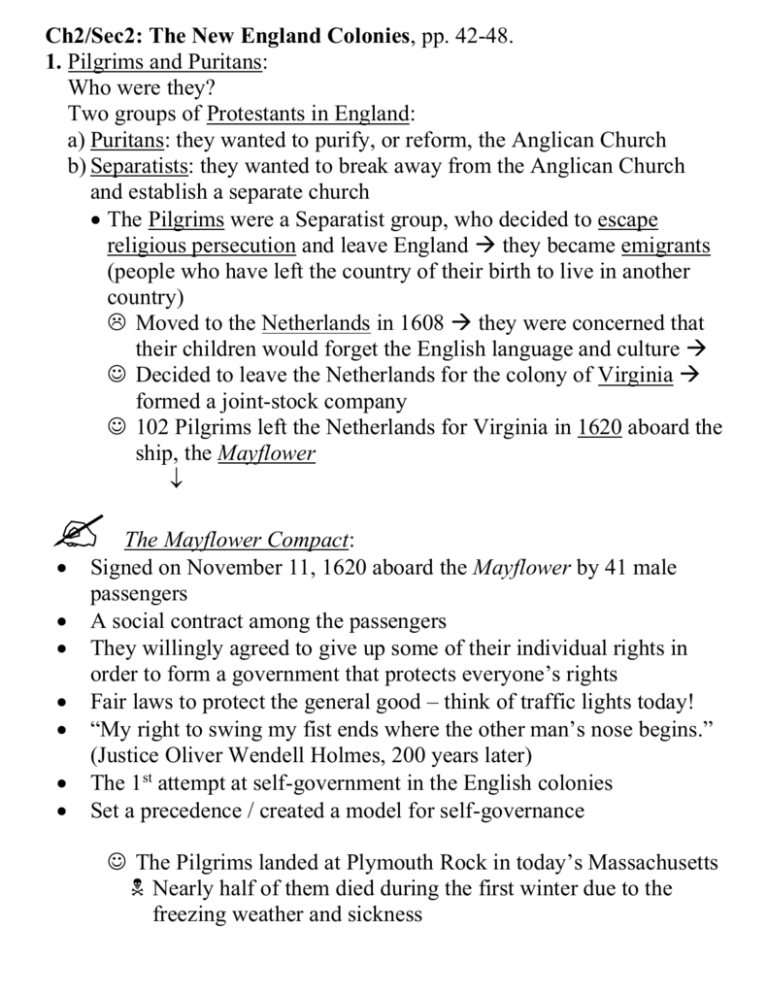
Ch2/Sec2: The New England Colonies, pp. 42-48. 1. Pilgrims and Puritans: Who were they? Two groups of Protestants in England: a) Puritans: they wanted to purify, or reform, the Anglican Church b) Separatists: they wanted to break away from the Anglican Church and establish a separate church The Pilgrims were a Separatist group, who decided to escape religious persecution and leave England they became emigrants (people who have left the country of their birth to live in another country) Moved to the Netherlands in 1608 they were concerned that their children would forget the English language and culture Decided to leave the Netherlands for the colony of Virginia formed a joint-stock company 102 Pilgrims left the Netherlands for Virginia in 1620 aboard the ship, the Mayflower The Mayflower Compact: Signed on November 11, 1620 aboard the Mayflower by 41 male passengers A social contract among the passengers They willingly agreed to give up some of their individual rights in order to form a government that protects everyone’s rights Fair laws to protect the general good – think of traffic lights today! “My right to swing my fist ends where the other man’s nose begins.” (Justice Oliver Wendell Holmes, 200 years later) The 1st attempt at self-government in the English colonies Set a precedence / created a model for self-governance The Pilgrims landed at Plymouth Rock in today’s Massachusetts Nearly half of them died during the first winter due to the freezing weather and sickness Pilgrims and Native Americans: Squanto: a Patuxet Indian who spoke English - Fertilizing the soil w/ fish remains - Peaceful relations w/ the Wampanoag Indians - Thanksgiving feast: marked the survival of the Pilgrims in the new colony Pilgrim Community: Farming and trading in fish & fur Families as centers of religious life, health care, education, & community well-being Division of labor: - Women: cooking, spinning, weaving, sewing, soap & butter, caring for livestock - Men: farming, repairing tools, chopping wood, building shelters Women’s status: - More rights than in England: sign contracts, sue, own property The Pilgrim community grew significantly due to economic (unemployment & taxes), political (rebellions), & religious crises (persecution of religious dissenters) b/w 1620-1640 - Great Migration * King Charles I charter to a group of Puritans Massachusetts Bay Company * 1630: Puritans led by John Winthrop to establish an ideal Christian community (“city upon a hill”) * Tools, livestock, peaceful trading relations w/ the Indians & Plymouth, healthy climate * Successful colony by 1691, MBC also included Plymouth 2. Religion and Government in New England: General Court: self-government to represent the needs of the people - 2 or 3 delegates per town - elected the governor & his cabinet - became a 2-house (bicameral) legislature No separation of church and state: - Gov.’t leaders were church member - Ministers had great authority - Gov.’t leaders outlawed certain religious views & punished dissenters Thomas Hooker – founded Connecticut (1636) - The Fundamental Orders of Connecticut: not just church members could vote expansion of democracy Roger Williams – founded Providence (later Rhode Island); supported: - Paying for Indian land - Separation of church & state - Religious tolerance Anne Hutchinson – founded Portsmouth (later included in RI) - People’s relationship w/ God did not need guidance from ministers (Williams & Hutchinson were forced out of the MBC for their views.) 3. New England Economy: Rocky soil little farming, lots of manufacturing Trade: furs, pickled beef, pork, dried fish Fishing: cod, mackerel, halibut, whales Shipbuilding: merchant & fishing ships Crafts: skilled trades, such as blacksmithing, weaving, shipbuilding, printing (Apprentice journeyman (exam) master craftsman) 4. Education in the colonies: important Parents wanted their children to be able to read the Bible MBC passed laws requiring the education of children Public education: to ensure educated ministers for the future - Town schools (1 in each town w/ 50 families) - New England Primer as textbook - Elementary education only - Public schooling in the New England colonies only (parents or private tutors in the Southern colonies) Higher education: - Harvard College (1636) - William and Mary (1693) Literacy rate (the ability to read and write): 70% of men & 45% of women in New England (much smaller in Virginia)
